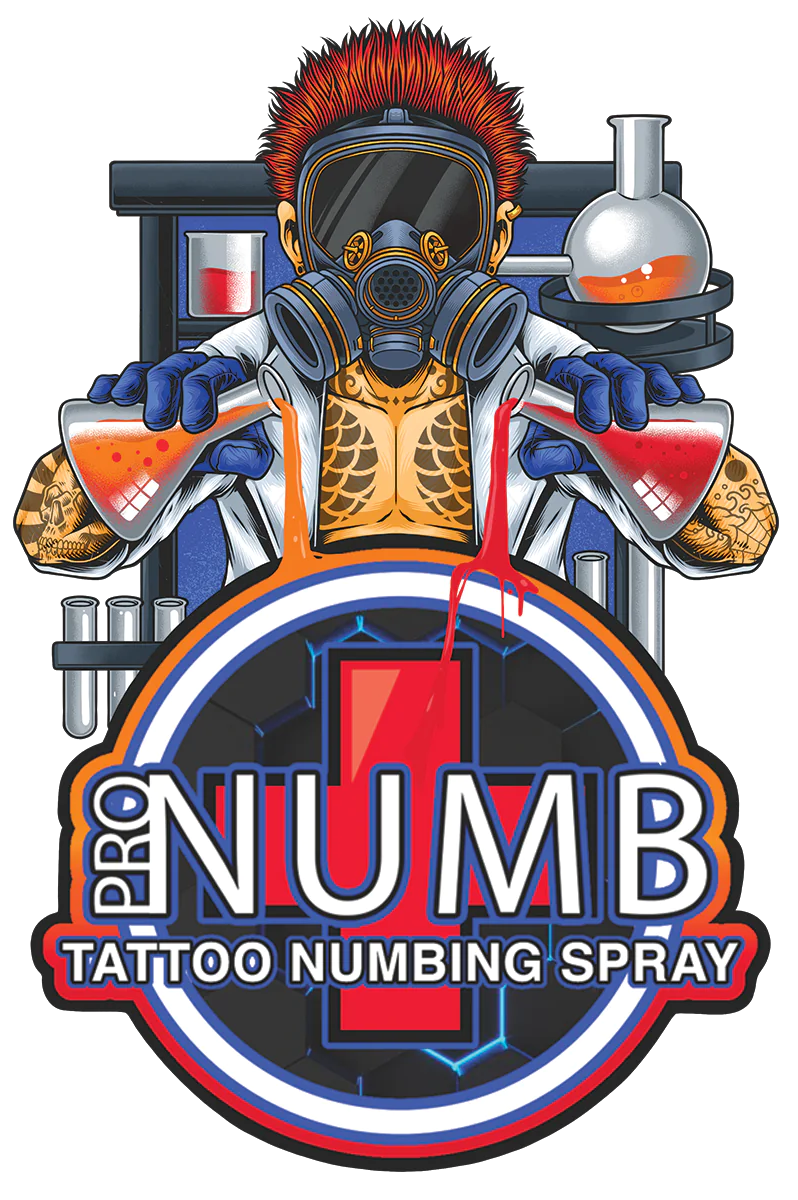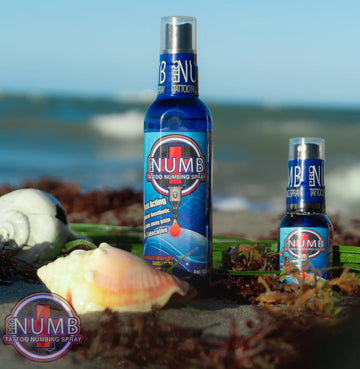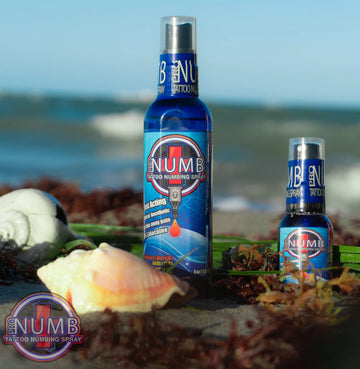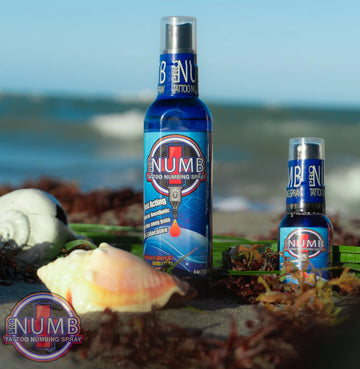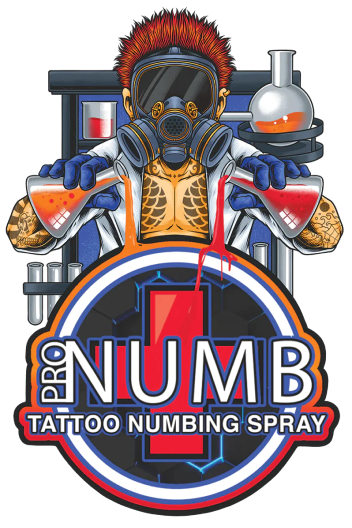When preparing for a tattoo, one of the primary concerns for many is the pain associated with the inking process. In response, a variety of numbing products have been developed to ease discomfort, among which numbing sprays and creams are the most popular. This article aims to delve deeply into the comparison between tattoo numbing sprays and creams to help you make an informed decision about which might be more suitable for your next tattoo session.
Numbing sprays and creams are topical anesthetics that temporarily reduce the sensation in the skin, making the needle's puncture less painful. Numbing sprays are generally applied shortly before the tattoo procedure begins and are favored for their ease of application and fast-acting effects. Numbing creams, on the other hand, often require application well in advance—sometimes up to an hour before the tattooing starts—and are praised for their prolonged numbing effect.
Throughout this discussion, we'll explore how each product works, their application processes, benefits, drawbacks, and much more, providing a comprehensive guide to what you can expect from each option. This comparison will not only include a scientific perspective on their efficacy but also incorporate feedback from industry professionals and user testimonials to offer a holistic view.
Understanding Tattoo Numbing Products
Tattoo numbing products play a crucial role in the tattooing process by significantly reducing the pain associated with the needle's penetration into the skin. These products are designed to numb the epidermis (outer layer of the skin) and the dermis (layer beneath the epidermis where tattoo ink is deposited), making the experience more comfortable for clients.
How They Work:
The primary function of tattoo numbing products, whether sprays or creams, is to block nerve signals in the skin. This action is achieved through the use of local anesthetics, which temporarily disrupt the way that nerve endings send pain signals to the brain. When applied to the skin before the tattoo needle does its work, these products can significantly dull the sensation of pain, ranging from mild reduction to complete numbness, depending on the product's strength and formulation.
Key Ingredients:
1. Lidocaine - One of the most common active ingredients in both numbing sprays and creams, lidocaine is a local anesthetic that provides rapid, effective numbing. It works by temporarily blocking the nerve pathways in the skin.
2. Prilocaine - Often used in conjunction with lidocaine, prilocaine further enhances the numbing effect by extending the duration of numbness, allowing for longer tattoo sessions.
3. Benzocaine - This is another local anesthetic commonly found in numbing products, particularly creams. Benzocaine tends to work on the surface of the skin, making it effective for initial application before the skin is broken.
4. Tetracaine - A potent anesthetic that provides a deeper numbing effect, often found in products formulated for more extensive and painful tattoo sessions.
5. Epinephrine - While not an anesthetic itself, epinephrine is frequently added to reduce bleeding and swelling at the tattoo site, prolonging the anesthetic effects of other compounds.
By understanding these key ingredients and their effects, users can better choose a product that aligns with their needs and pain tolerance levels. It's also essential for users to be aware of any potential allergies to specific components and to discuss their options with a professional tattoo artist before proceeding with any numbing product.
What is Tattoo Numbing Spray?
Tattoo numbing spray is a topical anesthetic product specifically formulated to reduce the discomfort associated with tattooing. Unlike numbing creams that are thick and creamy, numbing sprays are liquid solutions that can be applied directly to the skin with minimal mess. They are favored for their ease of application and rapid onset of action, making them particularly useful during long tattoo sessions or when working on sensitive areas of the body.
Ingredients:
Tattoo numbing sprays typically contain active ingredients like lidocaine, tetracaine, or benzocaine, which temporarily block the nerve signals that convey pain sensations to the brain.
This action helps to dull the pain of the tattoo needle. The formula may also include skin conditioners to help soothe the skin and agents like epinephrine to reduce swelling and bleeding. The goal is to create a more comfortable experience for both the client and the tattoo artist, enabling more detailed work without the interruption of discomfort.
Application Process:
The application process for tattoo numbing spray is straightforward but requires careful timing to maximize its effectiveness:
1. Clean the Skin: Before applying the numbing spray, the skin should be thoroughly cleaned and disinfected to prevent infections. This step also ensures that the spray can penetrate the skin more effectively.
2. Initial Application: Numbing spray is generally applied before the skin is broken. Spray a light layer over the area to be tattooed and allow it to sit for the manufacturer-recommended time, usually between 5 to 10 minutes.
3. During the Tattoo Session: As the skin is broken and the tattoo progresses, numbing spray can be reapplied to keep the area numb. Because sprays are less messy and absorb quickly, they are ideal for ongoing application throughout a session.
4. Reapplication: It is important to follow the guidelines regarding reapplication, as overuse can lead to skin irritation or increased absorption of the anesthetic, potentially leading to adverse effects.
By following these steps, tattoo numbing spray can significantly ease the pain of tattooing, especially in highly sensitive areas. It is always recommended to use numbing sprays under the guidance of a professional tattoo artist who can ensure that the product is used safely and effectively.
What is Tattoo Numbing Cream?
Tattoo numbing cream is a type of topical anesthetic specifically designed to alleviate the pain associated with getting a tattoo. These creams are thicker than numbing sprays and contain active ingredients that numb the skin, such as lidocaine, prilocaine, benzocaine, or a combination of these. They are widely used not only because they reduce pain but also because they can help to control swelling and bleeding during the tattooing process.
Description:
Numbing creams work by temporarily blocking the nerve signals in the skin that communicate pain to the brain. This action helps the person receiving the tattoo to experience less discomfort during the procedure. The creams are formulated to be thick so they can create a barrier on the skin, which helps prolong the numbing effect. This characteristic makes them particularly suitable for longer tattoo sessions where sustained numbing is beneficial.
Application Process:
Applying tattoo numbing cream involves a few more steps than using numbing spray, with important considerations for timing and safety:
1. Clean and Prep the Skin: Thoroughly clean and dry the area where the tattoo will be applied. This helps in the effective absorption of the cream.
2. Generous Application: Apply a generous layer of numbing cream to the area. Do not rub it in completely; rather, let it sit on the surface of the skin to form a thick layer.
3. Cover the Area: Once applied, cover the cream with plastic wrap. This occlusion helps increase the cream's efficacy by warming the skin and preventing the cream from drying out. Leave the wrap on for about 45 minutes to an hour before the tattoo session begins, depending on the product instructions and your skin's sensitivity.
4. Wipe Off: Just before the tattooing begins, remove the plastic wrap and gently wipe off the cream without using alcohol or harsh chemicals. The area should be cleaned again to ensure it is sterile before tattooing commences.
5. Reapplication: Unlike sprays, reapplying numbing cream during the tattoo session is not typically recommended due to the need for skin to be broken and possible interference with the tattoo ink.
Understanding these differences and correctly applying numbing cream can significantly enhance comfort during tattoo sessions, particularly for those getting large or particularly painful tattoos. Always ensure to use products as directed and consult with a professional tattoo artist to achieve the best results safely.
Comparing Tattoo Numbing Spray and Numbing Cream
When preparing for a tattoo, choosing the right numbing product can significantly affect your comfort during the session. Both numbing sprays and creams are effective, but they differ in their application, duration of effect, ease of use, and the overall comfort they provide. Understanding these differences can help you choose the best option for your tattoo experience.
Effectiveness:
Both numbing sprays and creams are designed to reduce pain, but their effectiveness can vary based on the formulation and the active ingredients used. Generally, numbing creams are considered more effective for longer sessions because they can be applied before the skin is broken and create a deeper numbing effect. Sprays, while effective, often require the skin to be broken first and are better suited for quick touch-ups during the tattooing process.
Duration of Effect:
- Numbing Creams: These typically have a longer-lasting effect, which can be beneficial for sessions lasting more than an hour. The numbing effect can last anywhere from two to four hours, depending on the brand and concentration of active ingredients.
- Numbing Sprays: Sprays tend to act faster but have a shorter duration of effect, usually lasting about 45 minutes to an hour. This makes them ideal for shorter sessions or for reapplication during breaks in longer sessions.
Ease of Use:
- Numbing Creams: Creams require more preparation, as they need to be applied 45 minutes to an hour before the tattooing starts and covered with plastic wrap to enhance absorption. This can be less convenient but is very effective for extensive work.
- Numbing Sprays: Sprays are easier to apply and do not require advance preparation. They can be used directly on the skin during the tattoo process, making them more convenient for both the artist and the client.
Comfort and Sensation:
- Numbing Creams: Creams provide a deep numbing effect that significantly reduces pain and discomfort. The sensation is generally one of complete numbness in the applied area, which can be disconcerting to some but is preferred during long, painful sessions.
- Numbing Sprays: Sprays cool the skin upon application and provide a quick numbing effect. The sensation is less intense compared to creams, which can be preferable for those who wish to still feel some touch without the sharper pains of tattooing.
The choice between numbing spray and cream largely depends on the length and location of your tattoo session, your pain tolerance, and your preference for how you experience the tattooing process. Discussing options with your tattoo artist can also provide personalized recommendations based on their professional experience with different numbing products.
Pros and Cons of Tattoo Numbing Spray and Cream
Choosing the right numbing product for your tattoo can greatly influence your comfort and the overall experience. Both numbing sprays and creams have their respective advantages and disadvantages. Understanding these can help you make an informed decision tailored to your specific needs.
Numbing Spray
Advantages:
- Quick Activation: Numbing sprays act fast, reducing pain almost immediately upon application. This is particularly useful for sudden discomfort during a tattoo session.
- Ease of Reapplication: Sprays can be easily reapplied without disrupting the tattooing process, making them convenient for longer sessions requiring intermittent relief.
- Less Messy: Unlike creams, sprays do not leave a heavy residue, which can be easier for the tattoo artist to work with.
Disadvantages:
- Shorter Duration: The numbing effect of sprays lasts for a shorter period, typically requiring multiple applications during a long session.
- Surface-Level Numbing: Sprays may not penetrate as deeply as creams, potentially leading to insufficient numbing for particularly sensitive areas or highly detailed work.
- Potential Allergic Reactions: As with any topical product, there is a risk of allergic reactions. Ingredients in numbing sprays can cause reactions ranging from mild irritation to severe allergic responses, depending on individual sensitivities.
Numbing Cream
Advantages:
- Longer-Lasting Effect: Creams provide a more prolonged numbing effect, which is beneficial for extensive tattoo sessions.
- Deeper Penetration: They penetrate deeper into the skin, offering a more comprehensive numbing coverage, which is ideal for tattoos in highly sensitive areas.
- Reduced Pain Perception: Creams can significantly lower pain perception, making them suitable for those with low pain tolerance.
Disadvantages:
- Requires Advance Preparation: Creams need to be applied about an hour before the tattoo session begins, which requires planning and can be inconvenient for spontaneous decisions.
- Messy Application: They can be messy and require the area to be wrapped in plastic wrap to enhance absorption, adding to the preparation complexity.
- Texture and Quantity: The thick texture of creams means more product is often required to cover an area sufficiently, which can increase costs and the sensation of heaviness on the skin.
Expert Opinions and Recommendations
When selecting between numbing spray and cream for tattoos, professional insights and clinical evidence play critical roles in guiding consumers towards making informed choices that align with their health and tattoo outcomes.
Insights from Dermatologists and Tattoo Artists
Dermatologists:
- Safety First: Dermatologists emphasize the importance of choosing products that are not only effective but also safe for all skin types. They recommend testing the product on a small skin area before full application to avoid allergic reactions or adverse effects.
- Product Choice: They often suggest creams for individuals with sensitive skin as creams have a controlled release mechanism that reduces the risk of skin irritation compared to sprays.
Tattoo Artists:
- Preference for Sprays: Many tattoo artists prefer sprays due to their ease of use and fast action, which can be beneficial during lengthy tattoo sessions.
- Situational Use: Artists might recommend creams for clients undergoing extensive sessions or those who have previously experienced high levels of discomfort, as the longer-lasting effect of creams can make the process more bearable.
Clinical Evidence:
- Efficacy Studies: Various studies have validated the efficacy of both numbing sprays and creams. For instance, a randomized controlled trial published in the *Journal of Clinical and Aesthetic Dermatology* found that a lidocaine-based numbing cream significantly reduced pain during tattoo sessions compared to a placebo.
- Safety Profiles: Research also focuses on the safety profiles of these products. Numbing sprays, while effective, have been noted in some studies to cause temporary redness and swelling at the application site, especially when used in large amounts or reapplied multiple times.
- Comparison Trials: Direct comparisons between sprays and creams are less common, but anecdotal evidence and smaller scale studies suggest that while sprays offer immediate relief, creams provide a deeper, more sustained numbing effect that is often necessary for tattoos in highly sensitive areas.
Drawing on both professional recommendations and clinical evidence, individuals considering numbing products for tattoos should weigh these insights carefully. The choice between numbing spray and cream should be informed by personal pain tolerance, the specific area to be tattooed, anticipated session length, and any known skin sensitivities. Consulting with both a dermatologist and a tattoo artist can provide tailored advice that enhances comfort and safety during the tattooing process.
